Last Updated on June 17, 2020 by Leyla Kazim
I can’t imagine there is any one single resource that lists all the places to get food in Tokyo. If it did, it would break the internet. And if it didn’t break the internet, it would break the human resolve, because reading it would be like counting the population of China in that you would never reach the end. Perhaps this should be the modern-day definition of infinity – the number of restaurants in Tokyo (incidentally, I have just Googled ‘how many restaurants are there in Tokyo?’ and estimations say 80k compared to 15k in New York and 6k in London. So like I said, infinite).
Tokyo’s topography is like a psychedelic 3D game of Tetris. It’s a city made from a bazillion building blocks stacked on top of each other with that efficiency the Japanese are so good at. It rises up and out, as well as below (there are vast subterranean floors running beneath stations) to create a mind-boggling, multi-layered, three dimensional environment able to satisfy every want ever conceived.
Every door, every window, every protruding neon sign or hanging banner, every alleyway, every floor in every single building, the top and bottom (and middle) of every flight of stairs, every nondescript frontage, every unassuming flicker of light, every gap between two planks of wood – is yet another dining establishment ready to serve. They range from standing-only holes-in-the-wall, thresholds marked by a simple curtain and able to accommodate no more than five pairs of feet, to yawning cafés for long languorous lunches. A lifetime might provide enough meals to eat your way across seven of its buildings.
In a city like this, deciding where to eat by throwing a chopstick into the air (don’t actually do this – very rude), heading half a kilometre in the direction its pointing towards when it lands, spinning round with your eyes closed five times, and eating wherever is closest to the point where your vision stops dancing, will more often than not land you a very good meal. After all, this is a country where the quality of the most ordinary food offering is often on a par with the part of London’s dining scene we would call ‘pretty decent’.
If you are reading this post, I can safely assume that you, intrepid explorer and/or fellow food-nut, are quite like me, in that you like to do a bit of pre-holiday eating research. You want the best food for the best price, you want to make sure you’re not ‘settling’ when there is a superstar restaurant around the corner, you want to indulge in the finest eating your finite time and budget can possibly allow, and this requires some forward planning – I get that.
 |
| Mika from Tokyo Food Tour |
But my advice to you is, when it comes to Tokyo, don’t get bogged down in this. Because almost all of it is great. Even though the restaurant you ate at yesterday fed you “the best sushi you’ve ever had”, you can’t possibly know if the place seven doors down is better because, when a country consistently churns out excellence, what’s “better” just becomes arbitrary. I mean, it’s just all good – you know?
But because you are (still) reading this, you probably are like me, and demand some level of guidance, a list to follow, pointers about where to even begin. It’s understandable, so I’ve created a little something.
What’s good about this list is firstly, it covers a respectable portion of Japan’s vast cuisine. Secondly, it’s not comprised by me alone – who still knows next to nothing about Tokyo despite spending five days there – but by people who do.
One main source is Mika Takaki from Tokyo Food Tour who showed us a few great places around Ginza one evening. She’s a cook and caterer, lived and worked in San Francisco for a few years, and is able to personalise food tours to whatever it is you’re interested in; Mika doesn’t come cheap, but does come highly recommended.
The other is Japanese chef, author, sommelier and shochu advisor Yukari Sakomoto. I came across a short interview in a travel magazine about her favourite spots in Tokyo and visited a few. I have then added a couple of cheap-and-cheerful entries I pre-holiday-researched myself when I was under the misguided impression that these would be lifesavers, as Tokyo was the most expensive city in the universe. Which I quickly realised after landing, is a massive misconception.
My final bit of advice when visiting Tokyo: surrender your senses to the onslaught of stimuli and just go with it, whatever ‘it’ turns out to be for you.
10 Things to Eat in Tokyo
1) Kushikatsu
What: aka kushiage – lightly breaded and fried skewers of – well, anything
Restaurant: Dengana Kushikatsu
Where: 3-16-10 Shinbashi, Minato-ku, Tokyo Map
Hours: Mon – Fri 11:30 – 14:00 / 16:30 – 23:30 Sat – Sun 12:00 – 23:30
Price: the below plus one large beer = ¥2100 (appx. £12 / $20)
Give a good kushikatsu chef an old leather belt and he could probably breadcrumb and fry it up into something you would want to put into your mouth.
Very fine crumbs are used in this coating, and the fry is quick and hot resulting in a crisp shell concealing briefly cooked ingredients beneath.
We worked our way through a mixture of meat and vegetable skewers: pickled ginger, lotus root, smelt fish, shrimp, mochi (glutinous rice balls), onion, small green peppers (like Padron peppers), and a second round of pickled ginger because it was deep pink and gorgeous. As well as a plate of pork tripe cooked in a sweet viscous miso sauce and furnished with spring onions – why not.
The dipping sauce for the skewers is dark, sweet and shared – you submerge them whole, before biting only. The sign above it roughly translates to “double-dip and prepare to be skewered”. Rightly so.
The menu is fully Japanese so I would advise pointing at the glass counter at what you fancy, learning the words for ingredients you particularly enjoy, or using that very useful phrase – ‘nani ga osusume des ka?‘ (what do you recommend?).
Recommended by Mika.
2) Sashimi
What: thinly carved and spanking fresh raw meat (usually seafood)
Restaurant: Uokin Izakaya
Where: 2-19-7 Shinbashi, Minato-ku, Tokyo (1 min walk East of Shinbashi Station) Map
Hours: Only open in the evenings, 17.00 – 11.30
Price: the below plus two glasses of sake = ¥3000 (appx. £17 / $29)
Uokin has a few outlets in Tokyo and we were informed by Mika that it’s very much an izagaya (casual eatery) of-the-moment. Its specialities lie within seafood (hence the sign) and either has a bar at which to stand and eat at ground level, or you can go up a floor for table seating.
It’s the first I’ve been on my feet whilst having my dinner in a restaurant (a common occurrence in Tokyo – good for space-saving I suspect) and you know, I barely noticed. It was probably all that sake.
An okomase (chef’s selection of the best seafood of that day) sashimi platter presented us with some glistening produce: tairagai (like a giant scallop) with an iridescent shell; oysters with spring onions, daikon (Japanese radish) and a touch of chilli paste; sawara (Spanish mackerel); tai (snapper); shime saba (cured mackerel); aji (horse mackerel) and maguro (tuna).
Before bar-hopping to the next place, we finished with a soup (as Japanese cuisine so often dictates – contrary to the the west which generally starts with it) – of seaweed with tofu. Warm and comforting, full of calcium and righteousness.
Again, a fully Japanese menu. “Okomase sashimi, kudasai?” will get you a platter similar to what we had.
Recommended by Mika.
3) Tempura
What: seafood or vegetables battered and deep fried
Restaurant: Tendon Tenya Tempura
Where: 3-9-4 Ginza, Chuo-ku, Tokyo Map
Hours: Mon – Sun 11.00 – 23.30
Price: the below two set meals with an extra side = ¥1600 (appx. £9 / $29)
If you haven’t already noticed, the Japanese quite like deep-frying things. Probably the most internationally recognised of this genre is tempura. If you want to – particularly in the upmarket district of Ginza – you can spend upwards of £150 a head for what is essentially a very simple concept (the best ones always are though, aren’t they).
But don’t let that simplicity fool you. Good tempura should start with quality ingredients destined for the plunge, have a light and crisp batter, and not be greasy – I suspect it’s more difficult than it sounds.
Tendon Tenya is a respectable and exedingly good value chain that manages to achieve this, and much-loved by locals. The menu is full of set meals (also available in English), with a choice of carbs to help bulk it out including rice and (hot or cold) udon, along with a range of extra toppings or additional sides, including a tasty little octopus and seaweed salad.
Filling the bellies of two big-eaters with good food for under a tenner in one of the poshest parts of town – credit where it’s due.
4) Kushiyaki
What: things that are skewered and grilled over coals – aka yakitori (usually when it’s chicken)
Restaurant: Mitsumasa
Where: 3-19-6, Shinbashi, Minato-ku, Tokyo (2 min walk from Shinbashi station) Map
Hours: Mon – Fri 17:00 – 23:00, Sat 17:00 – 22:00, Closed Sundays
Price: the below plus some tea = ¥3000 (appx. £17 / $29)
If you’re the sort of person that is quite into the bits of the animal so often cast aside as waste, this is the place for you. Even if you’re not, I urge you to try it.
Mitsumasa is a casual but well turned out offering that heaves with uniformly black-suited salary man kicking back after a long day in the office, with row after row of meaty skewers straight from the coals – and a beer, or four. The uncooked meat is displayed in the glass cabinet and is an ode to all things pig, for it is this animal they specialise in.
We had pig skin (yum), pig tongue (ok then), pig heart (aren’t these going to be put into humans soon?), the less conquered parts of a chicken’s anatomy including the gizzard (crunchy) and knuckle (as pleasant as I assume chewing through a baby’s finger to be), chicken meatballs (phew), pickles with boiled pig intestine (go on then), and pig liver (strong, bitter, iron). I am generally pretty ok with tripe from sheep and cows and chickens, but when it comes to eating the organs of something else that eats meat, I wince a little.
But it’s a firm favourite with the Japanese and if you truly want to embrace the cuisine in it’s fullest form, I would give it a go.
Recommended by Mika.
5) Sake
What: Japan’s national social lubricant – a clear and alcoholic beverage made from fermented rice
Restaurant: Kuri Sake Bar
Where: Tony Building, 2F, 6-4-15 Ginza, Chuo-ku, Tokyo Map
Hours: Mon – Thu 18:00 – 03:00, Fri 18:00 – 03:30, Sat 18:00 – 00:30, closed Sun and every third Sat
Price: three tastings and some nibbles = ¥1000 (appx. £6 / $10)
For those prepared to knock elbows on the hunt for some of the country’s best sake, Kuri is a bar specialising in just that, with a weekly changing menu of over 150 varieties behind the counter.
The offering here is junmai meaning made solely with rice and water, without any additional distilled alcohol. They range from the freshest, just-pressed, unfiltered namazake (unpasteurised sake – kept refrigerated) to aged bottles from all over the country. The patterns at the bottom of the cups are designed to induce coos over the clarity of the tipple.
Before I sampled these, I thought I didn’t like sake. Turns out, I do like sake – I in fact love it. Forget anything you’ve had outside Japan – you won’t have had access to true namazake as its lack of pasteurisation means it doesn’t last long enough to reach overseas in a saleable condition. And let me tell you, it’s a taste revelation.
Go for a flight of three tasters with some nibbles, perhaps opening with ‘nani ga osusume des ka?‘ (what do you recommend?). If the response is the Japanese for ‘what do you like?’, I’m afraid you’re on your own. But I’m sure you’ll be fine.
Recommended by Mika.
6) Japanese Breakfast
What: a combination of things you’ve probably not come across before
Restaurant: I have no idea of the name
Where: close to Yarakucho Station – look out for railway arches Map
Hours: they seemed to start packing away the breakfast items around 10 – 10.30
Price: natto, rice, miso, nori, egg and tea for two = ¥550 (appx. £3 / $5)
There is something to be said for a nation of people who can think of few better ways to start their day than with a stringy, stinking mess of natto – fermented soya bean. Pick some up with your chopsticks and marvel at the mucus-like stretchiness, with sticky strings that float suspended in mid-air still attached to your utensils; the need to bat them away after every mouthful can look like a violent tick to the uninitiated.
Into this, stir raw egg and chopped spring onions, mix with a bowl of rice, add some sheets of nori (seaweed), accompany with dried fish and life-affirming miso and you have the makings of a rather splendid breakfast.
There is no presence of this restaurant on the internet, and I usefully didn’t take a picture of its front. We found it by asking the Tourist Information office behind Yarakucho Station where we could enjoy a traditional Japanese breakfast – this would be a good place to start. What I can tell you is that it’s small, and for the remainder of the day is a conveyor belt sushi restaurant.
The main point of this point is that you should experience a traditional Japanese breakfast in Tokyo, whether it’s here or somewhere else.
(The other half is convinced he recalls its precise location, which is what’s displayed on the map link above – I do think he’s pretty close if not spot on. Good luck.)
7) Sushi
What: the most internationally recognised part of Japanese cuisine
Restaurant: Kyubey
Where: 7-6, Ginza 8-chome, Chuo-ku, Tokyo Map
Hours: Mon – Sat 11:30 – 14:00 / 17:00 – 22:00, closed Sun and public holidays
Price: two omakase lunches with tea = ¥11,800 (appx. £68 / $115)
Yes, you can eat a sushi breakfast in Tsukiji Market at six in the morning, the real crowd-pullers being Sushi Dai and Daiwa Sushi. And arguably, it probably is some of the freshest in the world, considering the meat has travelled a matter of yards from wholesale (mere hours before) to chopstick.
But can that level of freshness really be so different from a quality sushi restaurant just a 15 minute walk away? The answer to that is of course, no. So forgo the three hour queues of tourists (no one wants too many of them first thing in the morning), and enjoy sushi at the countless number of other great restaurants in the area, nay, the city.
Kyubey is one of these. Round the corner from Tsukiji (almost), you can marvel at the deft manipulation of rice and the precise preparation of seafood by the itamae (chefs), from the counter seating.
And you want fresh? The legs of the prawns were moving and their mouths foaming little bubbles moments before their heads were ripped off and entrails removed before our very eyes. What theatre.
We grinned maniacally through the following (from top left): buttery salmon, spotted mackerel, squid with salt and a momentary touch of lime, velvety sea urchin (my first time – I loved it), those prawns (crunchy), scallop, otoro (the fattiest part of tuna belly – picture missing), bonito with fresh ginger and the tiniest scrape of raw garlic (look at that colour), cooked and coated unagi (eel), thin and crisp daikon and shiso (perilla leaf) sandwiches, sweet egg custard, vegetable maki, and miso.
‘Go chi so sama’, indeed – it was glorious; nothing in this country has come close.
Recommended by Yukari.
8) Ramen
What: Chinese-style wheat noodles served in a meat or fish based broth, often flavoured with soy or miso, topped with all manner of tasty treats
Restaurant: Naokyu
Where: Toshiba Build. B2, 5-2-1, Ginza (Shinbashi station’s underground shopping centre) Map
Hours: Mon – Fri 11:00 – 23:00, Sat – Sun and holidays 11:00 – 22:00
Price: two bowls of ramen and some gyoza = ¥1990 (appx. £12 / $20)
Whilst the best we can hope for in the UK is a Boots meal deal where they still have Innocent on the shelf, or if we’re lucky, a Pret, station-eating in Japan is nothing to be scoffed at; it’s synonymous with quality meals of excellent value.
The train stations in Tokyo have vast malls beneath, ready to breach the surface with the volume of shops and restaurants on offer (if ever in doubt in this city, head below ground or up some stairs and you’re sure to stumble across something great); Naokyu is one of these. Established around 100 years ago (one of the oldest in Tokyo, they claim), it serves traditional ramen in pork and chicken broths in a typically casual noodle-joint environment.
The tantan-men (a dish originating from Sichuan cuisine) was hot and spicy, a gathering of ground pork cooked in miso with sesame and some greens. It did wonders at blasting away the cold I was suffering from. Koku-uma ramen, with slices of pork belly, bamboo shoots, thin noodles and seasoned with soy was also very good, but the tamago (egg) should have had a runny yolk.
Dining on noodles tends to be a quick-fix affair in Tokyo – there are endless vending machine restaurants densely packed around station exits to – very speedily and cheaply – fill the bellies of salary-men (more often than not, inhaling their noodles whilst standing at a bar) on their way home. Naokyu is a good option to slow it down a bit – take a seat and savour the meal.
Our bowls of bone-warming elixir were very well-received; the cacophony of sucking and slurping from the fully Japanese clientèle around us hinted towards the same.
9) Bread and Pastries
What: Tokyo has a lot of boulangeries and patisseries, and they’re really good at them
Restaurant: Viron
Where: Tokia Building, 1F, 2-7-3 Marunouchi, Chiyoda-ku, Tokyo (near Tokyo station) Map
Hours: Mon – Sun: Bakery 10:00 – 21:00, Bar 10:00 – 23:00, Brasserie Lunch 11:30 – 14:00, Dinner 18:00 – 23:30. Closed 1st Jan and holidays
Price: the below = ¥3510 (appx. £20 / $35)
The Japanese don’t half love their bread. More often than not, it will be pristine white and highly processed, rather than the rustic, malty loaves dusted with oats and speckled with seeds we’re so good at producing here.
But there are quite a few skilled bakeries turning out all sorts of French pastries, boules and brioche with an expert hand. Viron is one of these, with a glass cabinet creaking under it’s own weight of stuffed rolls and sticks, pastries and patisseries able to add a kilo to muffin-tops through a hard stare alone. They import flour from France (where they also have a presence) to make Viron’s signature baguette, of which they’ve won awards for.
We had an entirely brown but very good breakfast of coffee, two chocolate studded viennoise, a big pain au chocolate, a crunchy and sweet Kouing Aman (originally from Brittany – crisp caramelised shell with soft buttery layers within), and a sundried tomato fougasse. Pass the fibre bar.
There’s outdoor seating and a lot of space inside, and it doubles up as a brasserie open for lunch and dinner if you fancy adding a bit more colour to your plate. Located right next to Tokyo station, it’s a prime spot for a morning pick-me-up before heading on the Shinkansen (bullet train).
Word of warning, coffee that isn’t standard filter or drip (always served with a pot of cream) is something that is a little pricey in Japan – a cappuccino and a latte came in at close to £8.
Recommended by Yukari.
10) Department Store Food Halls
What: the basement food halls of Tokyo’s department stores have a global reputation for a reason
Restaurant: Mitsukoshi Department Store
Where: 1-4-1 Nihonbashimuromachi, Chūō, Tokyo Map
Hours: Daily 10–7, basements until 8
Price: varies considerably
This this branch of Tokyo’s first depato (department store), also called hyakkaten (hundred-kinds-of-goods emporium), is the HQ of the international Mitsukoshi chain, and it’s impressive.
Descend to the basement food hall and prepare to become disorientated by the scale, diversity and sheer sensory onslaught of nearly half an acre of the world’s choicest comestibles. The space is filled with the noise from the drawn-out Japanese trader battle cries of ‘IRRASHAIMASEEEEE!’ (welcome!) and there are free samples of absolutely everything. From German wursts and confectionary moulded into chrysanthemums, to white triangle sandwiches filled with whipped cream and sliced strawberries and £120 muskmelons – if it can be consumed, you will find it here.
Grab some things to eat – perhaps a bento box followed by a decadent dessert – and enjoy up a few floors in the Mitsukoshi roof garden.
Dining observations I made in Tokyo
- A lot of restaurants are smoking, but ventilation systems tend to be so good that it’s easy not to notice. Many have designated no-smoking areas.
- Your bill is often brought to the table with the food (or when you ask for it) and payment is usually made at the till they’ll have near the entrance. It’s rare the payment is made at the table.
- When you do go to pay (both in restaurants or any shop), there will usually be a small tray at the cash desk. You are to put your payment (cash or card) on this tray, but the change will usually be given to you directly.
- If you want to grab the attention of the waiter, use sumimasen (excuse me).
- There is no tipping in Japan – pay what’s on the bill and nothing more.
- You will usually be given an oshibori (moist towel – often hot) once you’re seated – use this to wipe your hands and as a serviette for your meal – a lot of restaurants seem to not have any on the table.
- It’s good etiquette to pour a drink for your companion and not yourself.
- Never leave your chopsticks sticking out of a bowl of rice.
- It is perfectly acceptable – in fact encouraged – to slurp your noodles very noisily – it translates as you enjoying your food.
- If you’re cool, you eat sushi with your fingers. Turn it upside down and only dip the topping into the soy, not the rice. Sashimi is with chopsticks though.
- People don’t really eat while walking around in Japan – so street-food isn’t common. If you’ve purchased something on the go, it’s more polite to remain stationary or find somewhere to perch until you’ve finished it.
“If I had to eat one city’s food for the rest of my life, every day, it would have to be Tokyo. And I think the majority of chefs you ask that question to would answer the same way” – Anthony Bourdain.
Related articles:
JAPAN: onsen etiquette – a guide to taking a traditional public (and naked) bath
JAPAN: Tsukiji fish market tuna auction – 10 FAQ’s answered
JAPAN: tea ceremony in Kyoto
Check out www.japan-experience.com for all your Japan travel related needs, from rail passes and car rental, to hotel booking and tours.


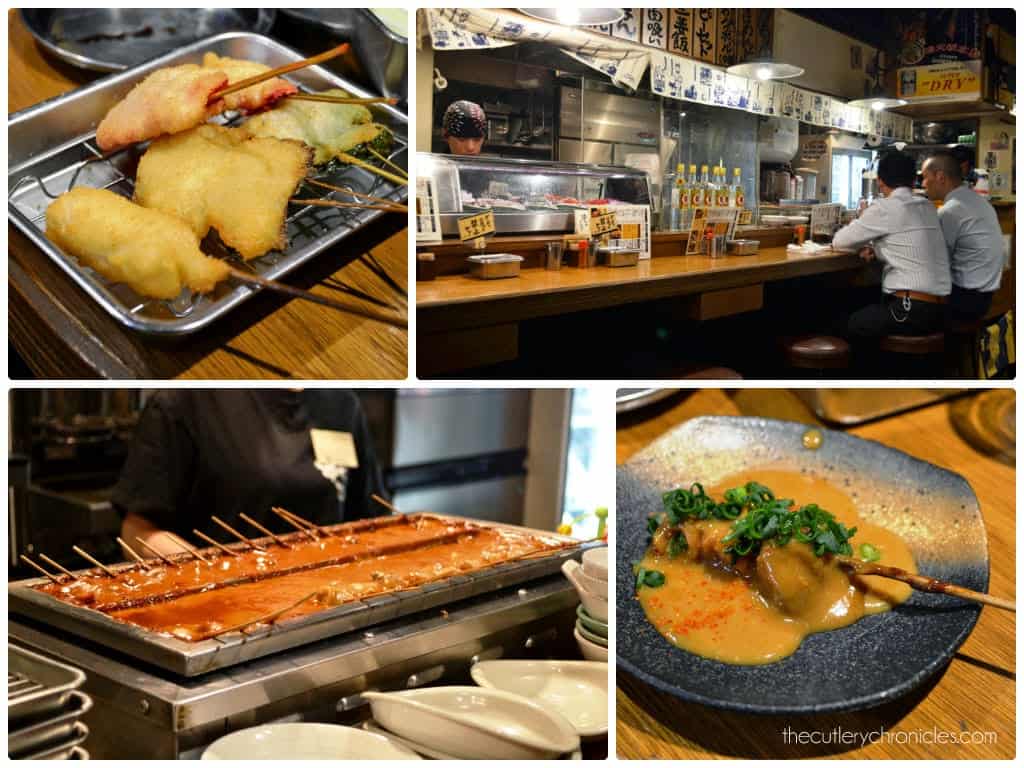


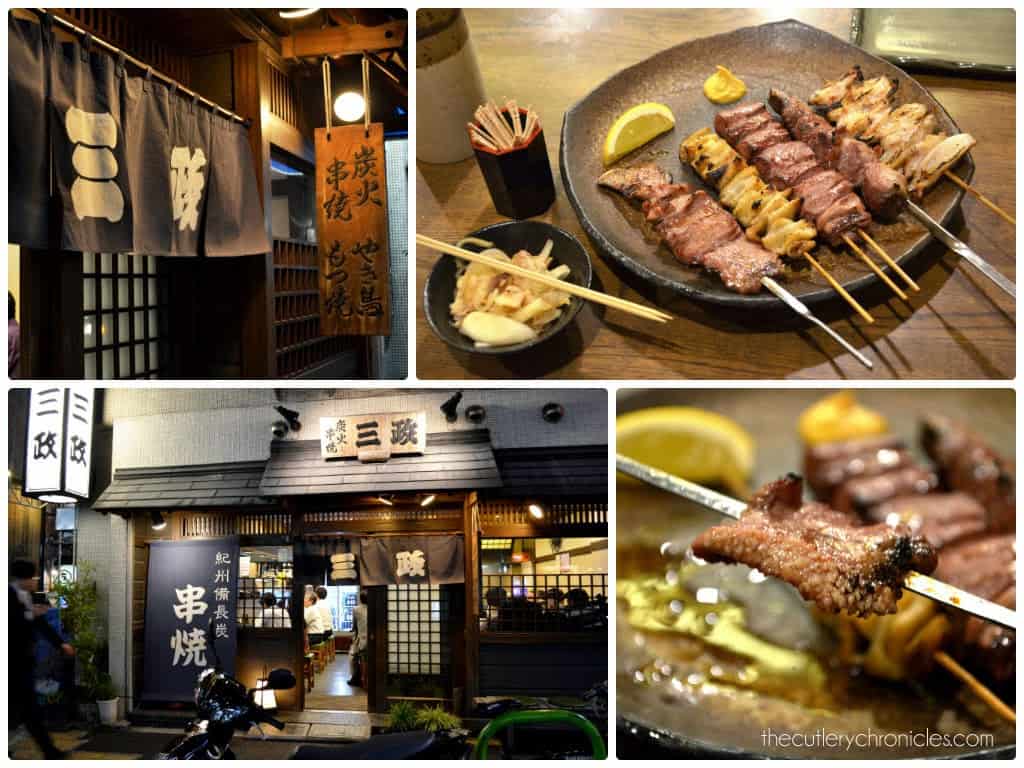



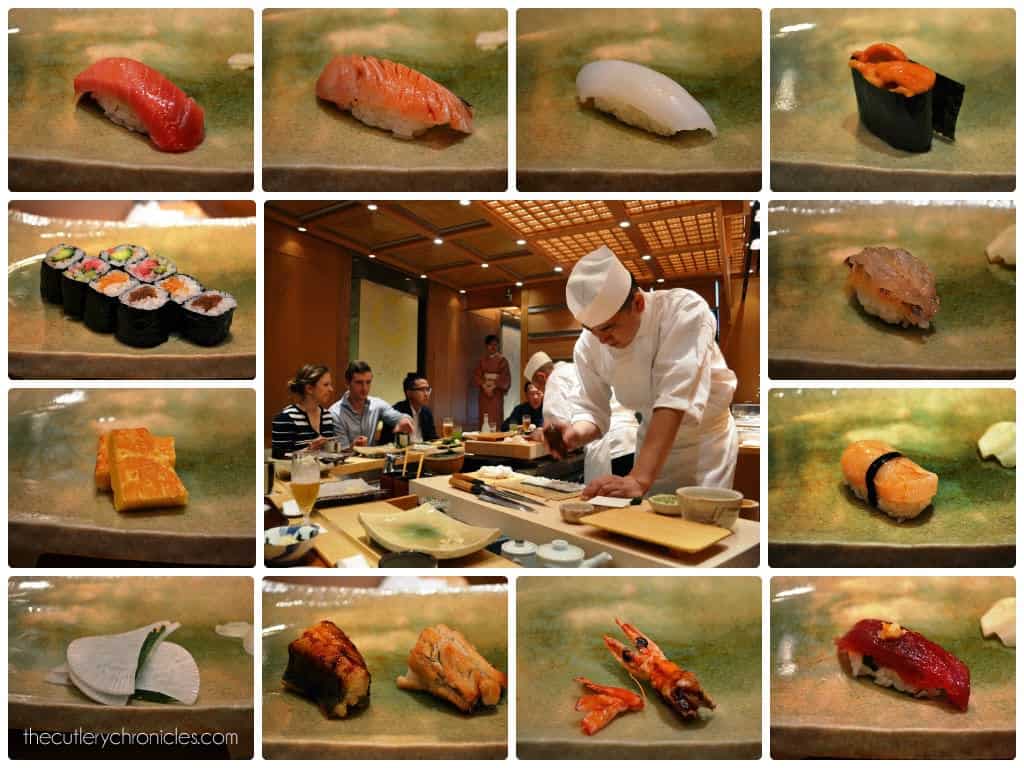
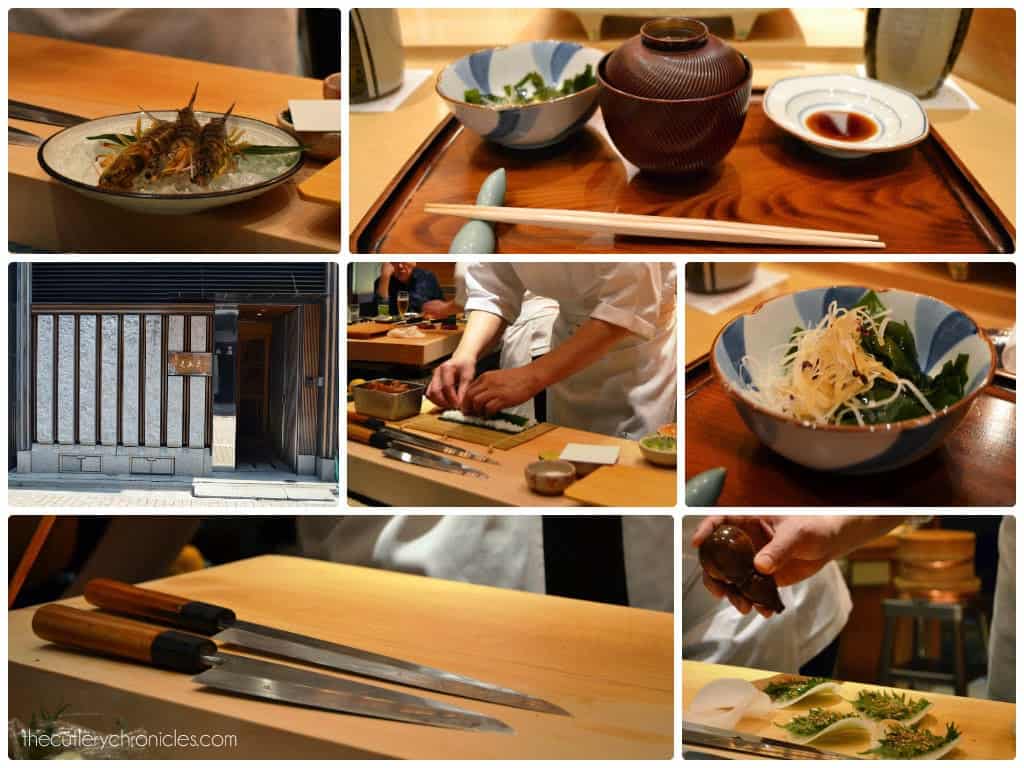


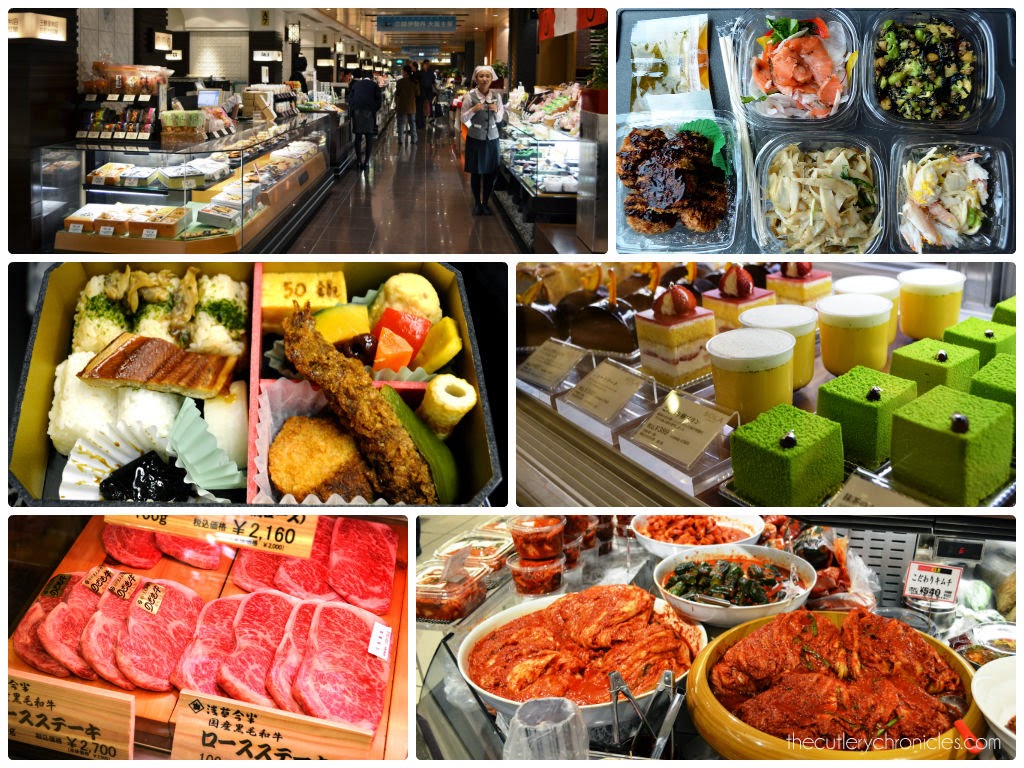

japanese food is great, particularly tsukiji, with its endless supply of fresh seafood, which you already covered in fine details…i just love japan chiefly for the freshness of the seafood, its a great adventure, refreshing experience of colors, different food textures, exotic tableware, inspiring dining customs and everything, but when it comes to TASTE and AROMA, they lack it all..no matter how much i like it, i must say japanese food is an experience outside the realm of tastes and aromas..
eminent japanese novelist Tanizaki has confirmed this point, in his "In Praise of Shadows" (陰影礼讃). i fully agree with Tanizaki on this and i could probably say that the BEST food experience in japan begins when you're finally on board flying to Istanbul with Turkish Airlines, as they always have TASTY turkish food on their menu…even the most elaborate and say, greatest japanese food is almost nothing, compared to even the most simple&plain bagel w/sesames, sold at any street corner in Turkie…not to mention a good, fresh işkembe or kelle-paça for a welcome home treat, as soon as you leave the airport.
taste comes first
afiyet şeker olsun,
Alp Çakaloz
(By the way, I didn't prebook any meals for our trips, with the exception of ryokan stays where meals were included, though I did have some notes on a few places I liked the sound of, and did go to a handful of those).
Ditto Kavey. Tokyo is such a labyrinth of incredible places to eat on every corner. Stumbling into somewhere full of Japanese enjoying raucous laughter and incredible food is definitely as you say, part of the fun. I want to go back!
Yes yes yes. I've had a conversation with some slightly twatty foodies lately where I've said exactly what you've said — yes the tendency of us obsessives is to research in advance, and that's fine, but I strongly advocate that people leave some of their slots open, rather than pre-book every meal because, really, it's virtually impossible to eat badly in Japan and there's enormous pleasure in simply stumbling into an unknown place, feeling like you've discovered something delicious, but knowing that yes, the restaurant next door and the one next door to that and the one next to that too are all probably just as good, because that's just how things are in Japan… (This in response to holiday-makers literally creating an eating schedule that covered every single lunch and dinner slot of their visit with prebooked famous places).
For tempura in Tokyo, we also enjoyed Tempura Tsunahachi Honten in Shinjuku…
Oh and yes on the Tsukiki fish — I couldn't see the logic of queuing several hours for one of the two guide book places when another place within the market, just around the corner, was busy but without the crazy queue. And tasted mighty fine to me!!
That's great to hear 🙂 Oh yes, they'll be a few more Japan posts to come, mostly food related, but covering other parts of the country. Keep a look out!
WOW! My mouth is literally watering. It is our absolute dream to go one day and you've only added to my desire. Thanks for sharing, looks like you had an incredible time! Would love to know what else you got up to/would recommend, apart from all that delicious food! xo